















By Mary Anne Gill
The success of a maraebased health clinic at Mangatoatoa Pā, just inside the King Country boundary near the banks of the Pūniu River, shows the power of collaboration.
And if you are looking for visual proof, the makeshift waiting room, outside the three consultation
portacoms, with its ‘always on the boil’ water urn, outdoor heater, snacks and health professionals readily at hand, provides that. Marae committee co-chair Derek Roberts describes the past two years setting up and then maintaining the clinic as hectic with support from Te Awamutu Medical Centre, Pinnacle Group and Tainui essential to its success.
“They’ve maintained the interest right from day one. By working in partnership, you can make that vision happen.
“Pinnacle have been the enablers. They’ve enabled us to do what we want to do for our whānau,” he says.
The Wednesday we visit both clinical care coordinators – Jenny Sutton from Mahoe Medical and
Whitney Te Wano from Te Awamutu Medical – are on hand as is Mahoe GP Shivam Deo. When the clinic started in 2022 it was held fortnightly. Last year Mahoe came on board, and it became weekly.
The marae is nine kilometres from Te Awamutu on Te Mawhai Road, off SH3. Its primary hapū are Parewaeono,
Ngutu and Paretekawa of Ngāti Maniapoto. A portrait of Rewi Maniapoto - hangs in the wharenui Te Maru o Ihowa, built 10 years ago next to Te Aroha o Ihoa, the original 1908 wharenui.
Te Awamutu Medical Centre general manager Wayne Lim says providing free community health services for Māori away from the practice and in
marae had always appealed to him as a model that would work.
The marae committee was keen and with assistance from Raukawa Charitable Trust, Te Awamutu Medical Centre funded a three-month trial that established the service at Mangatoatoa Pā. The initiative notched up a
Continued on page 9
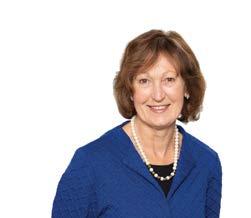




















Invites members and friends to:
Waipa Workingmen’s Club, Albert Park Drive.
Thursday 17 October
1pm for a 1.30pm start
Guest Speaker: Irene Wardlaw, RSA Welfare
Usual raffle and cuppa.
For further info contact
Michael on 871 9006 or Bernard 027 491 6763
Te Awamutu
Visual Artists’ Rosebank
Te Awamutu Library
Community Room
Saturday & Sunday
19th & 20th October
10 am – 3 pm each day
Art for Sale
All Welcome
News/Editorial
Roy Pilott editor@goodlocal.nz
027 450 0115
Mary Anne Gill maryanne@goodlocal.nz
021 705 213
Viv Posselt viv@goodlocal.nz
027 233 7686
Chris Gardner chris@goodlocal.nz
027 231 7007
Advertising Director
Janine Davy janine@goodlocal.nz
027 287 0005
Owner/Publisher
David Mackenzie david@goodlocal.nz
Office/Missed Deliveries
07 827 0005 admin@goodlocal.nz
State Highway 1 between Tīrau and Putāruru reopened on schedule last week while emergency road repair work continued at the intersection of SH1 and SH29 following heavy rain.
It was a busy four weeks for NZ Transport Agency Waka Kotahi on the 10km South Waikato stretch of SH1 and will now continue between Ātiamuri and Wairakei.
Waikato and Bay of Plenty Maintenance and Operations regional manager Roger Brady praised the team effort required to achieve this.
“The team had some major weather challenges, and while there was some inconvenience to those travelling on SH1, we’re delighted that the rebuild work has been a success. Residents’ co-operation has been a big part of getting the work done as planned.” SH1 remains closed at
nights between Piarere and north of Tīrau. This work is expected to be completed next week, dependent on weather.
The fourth closure, expected to be in place for up to six weeks, started on Monday between Tokoroa, Kinleith and Ātiamuri.
This is the biggest section of work undertaken and is the longest closure so far. This site is one of the larger and
more complex parts of the work programme, spanning 17kms and encompassing four separate work areas, ranging from 2.9km to 5.7km in length.
The Piarere roundabout opened to traffic last month with two temporary approaches in place.
The surface of these approaches deteriorated as a result of recent weather, requiring urgent repairs.

In good news for the week, we have made a great catch with the apprehension of four youths who were responsible for attempting to take motor vehicles.
All are now going through the Youth Aid process and being held to account. Investigations into the other car crime that has recently occurred, are ongoing.
This week I want to go back to the topic of Family Harm. In New Zealand it is estimated that only 33 per cent of family harm incidents are reported and research suggests as much as one in two New Zealand women have experienced intimate partner violence, when psychological abuse is included. Indications are that where a man is the victim of family harm, it may be as low as 10 per cent of incidents that are reported.
In so many such incidents, children witness the harm in the home. Children who are in bed or in a different room at the time of an argument or assault, are equally affected and may feel conflicted emotionally about what they are experiencing. We know that when a child appears unaffected following an incident at home, it suggests that the abuse happens often enough for it to have become normalised in their lives. I feel as a community we each have an obligation to speak out to stop or prevent harm when we believe it is occurring.





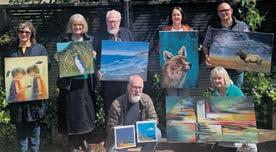




This is particularly true when we are talking about protecting our most vulnerable, the young and elderly.

If you know family harm is occurring in your neighbourhood or extended family, please let the right people know. Where there is immediate or likely danger, call 111 at the time. If you have concerns for the general wellbeing of a child, you may also make a report to Oranga Tamariki.
You can remain anonymous if necessary, however if you feel able to provide your contact details, the information you give can then be verified and further detail obtained if required. The outcome of a police visit following a family harm call out depends on what has happened and the offences that may have been identified. At the very least, a full report is submitted for review by the Integrated Safety Response panel. This group - composed of key government and non-government agency representativesensures appropriate follow-up and safety planning can be carried out. With family harm known to only escalate over time without intervention, the risk of serious physical and psychological harm is real where it continues to go unreported. We all deserve to feel safe in our relationships.
A Kihikihi ratepayer is seeking more than $2.5 million in damages, interest and costs from Waipā District Council dating back to 2001 when the council completed stormwater system work in the town. The action before the High Court in Hamilton says council has been negligent, breached its statutory duty and created a nuisance in relation to a private drain on the plaintiffs’ property.
Community input is being sought to help shape the management of four iwi-owned reserves in Waipā. The four reserves are under the administration of Ngā Pae Whenua, a joint management body made up of iwi representatives from Ngāti Koroki Kahukura and members of Waipā District Council. The reserves were part of the Ngāti Koroki Kahukura Treaty settlement with the Crown.
Waipā District Council is still awaiting a response from the Ombudsman regarding a Local Government Official Information and Meetings Act complaint made by The News seven months ago, Internal Assurance advisor Janice Downard told the council’s Audit and Risk committee this week. Cr Roger Gordon said that seemed a long time to wait. A case manager from the Ombudsman’s office has been assigned but the workload is “very stretched.”




Fitness fans now have more motivation to work out in Te Awamutu, thanks to new exercise equipment installed in Pioneer Park.
A 4.8m slackline set, hip swing and an endless rope machine were donated by Waipā Masonic Lodge with help from the Potter Masonic Trust. Jill Taylor – a Te Awamutu and Kihikihi Community Board member –helped arrange the donation.
Passenger numbers on the Te Awamutu-Kihikihi 24 regional bus service to and from Hamilton remain high with 12,051 catching the service last month, 2571 down on the record 14,622 who caught it in August.
The Te Kūiti Connector 26 service, while showing some disappointing numbers in the King Country, is well supported from Te Awamutu, Ōhaupō and Kihikihi and provides another option when number 24 buses are full.
For the second consecutive year, Waipā’s annual report has been delayed by Audit New Zealand. It was to have been presented to the Audit and Risk committee this week but will now go to an extraordinary meeting later this month before it is adopted by the council on October 29.
By Chris Gardner
Clare St Pierre has presented a plan to reduce the cost to people of car trips.
Speaking at the public forum in a personal capacity at September’s Te Awamutu and Kihikihi Community Board meeting, the Waipā District Council member for the PirongiaKakepuku Ward introduced a, community-focused rideshare model.
“We spend $26.1 billion annually on private vehicle travel,” St Pierre said. “There must be a better way to lower these costs, reduce congestion, cut emissions, and enhance community connectedness.”
The proposed model explained to the board allows private vehicle owners to share their trips with others heading to similar destinations, sharing the cost of the ride. Unlike traditional rideshare services, any surplus from the scheme will be reinvested into the community, with users voting on which projects or organisations receive funding.
This approach, St Pierre said, aimed to reduce the running costs of private vehicles without turning drivers into taxi services. The cost of rides will be lower than commercial
fares and encourage use for commuting, school runs, and other trips. She said the scheme could earn carbon credits for the community.
For Te Awamutu, with a population of 14,000, regular users could save approximately $900 annually on travel costs, St Pierre said. If just 10 per cent of the population used ridesharing for 20 per cent of their trips, the community could generate over $400,000 per year - is based on 11,325 private vehicles costing an average of $5800 to run a year.
So why hasn’t this model been developed before?
“There’s a dominant model prevailing in Western society that’s focussed on individual convenience and profit maximisation that is completely blind to pollution or what is called externalities,” St Pierre said. “Sorry, but it’s been designed by men.”
“My research shows that disrupting this model is an exciting possibility that would redefine the way we use transport, drastically reduce personal costs, generate fundings for our communities from the savings, and it’s based on relationships.”
Research from Australian university students highlight that women are three times more likely to use rideshare services than
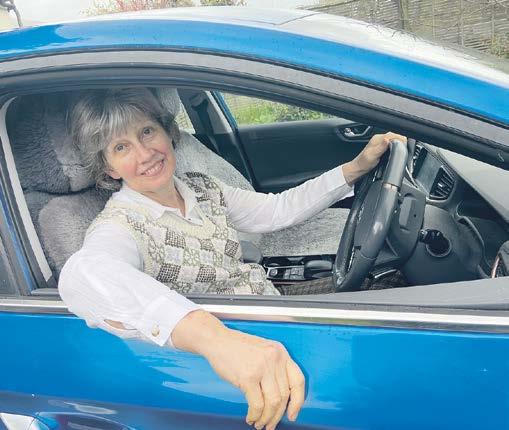
Pirongia’s Clare St Pierre is leading a rideshare initiative.
men, with safety being a critical concern. The new model would emphasise relationship connections to ensure personal safety, she said.
A mobile app, developed for St Pierre by Kings Own Institute students in Sydney, is set to launch by the end of the year. Pierre developed a relationship with the institute when she was chair of Pirongia Te Aroaro o Kahu Restoration Society.
A small-scale pilot is
being considered as proof of concept and St Pierre is looking for participants for a focus group to identify barriers to use, critical success factors and necessary incentives.
“Could the community board help me find these people?” St Pierre asked. “I’m looking for a group of people, preferably women, because they are likely to be the ones who use it, to go over in detail how it would work and what would stop
them from using it.” Community board chair Ange Holt offered her help.
“What a great idea. I mean wow. Just the level of thought you have put into it. It’s not just simply a rideshare, it’s the bigger picture with the savings and bringing money back to our community. It’s just so generous as well. Aren’t we lucky to have such an awesome idea here with us?”
By Chris Gardner
A sign at the northern entrance to Te Awamutu is to get a $1,725 spruce up
Te Awamutu and Kihikihi
Community Board decided, at its September meeting, to allocate the cash for repairs to the Ōhaupō Road sign.
The state of the sign has been discussed at the June, July and August board meetings.
A faded sign carrying the moto “For home and country” is all that remains of the town’s Women’s Institute, the
Waikato having three institutes in Hamilton and one in Te Pahu. Another sign is completely lost, with no clue of what group it commemorates, leaving a blank white plaque behind.
The board also allocated $2,300 towards battery recycling and a further $2,300 for its own projects.
The expenditure was proposed by Waipā District Council member Lou Brown and seconded by board member John Wood.
The decision prompted a brief
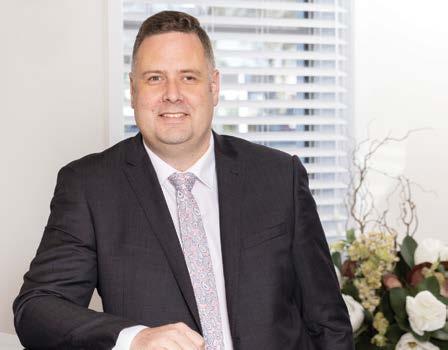
discussion on what organisations qualified to have their name on the sign.
Board chair Ange Holt said Altrusa had expressed an interest in fixing up the sign.
“They have a couple of little ideas about giving it a clean.”
She had also received a new design from a reader of The News.
“Who do we ask and where do we stop?” said Holt. “Something to think about.”
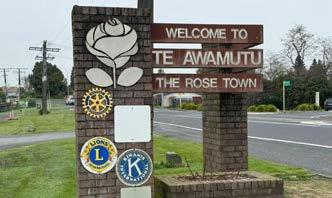
We believe that each funeral service should be as unique as the life you are celebrating. When a funeral is personalised, it creates a special space for sharing precious memories, telling stories, and simply being together with friends and family.
Rosetown Funeral Home are dedicated to providing personalised and meaningful funeral services, and are happy to discuss new ideas, pre-planning and/or pre-paying for your funeral. We are here for you in your time of need, so please get in touch anytime to discuss your options.

By Janine Krippner
“This is really bad.” My friend Danni was watching the water cross the highway towards the hotel where she was staying with her dog. Her home, not too far away and at a lower elevation, was in at least 1.2 metres of water.
“Is there a higher floor you can get to?” I ask.She goes and finds one. The next video she sends me has a lot of water, sirens… is that a building on fire in the background? It’s so windy. After she stopped recording there were explosions.
The devastating effects of Hurricane Helene will be felt for a long time. Thankfully, Danni is alive and physically unharmed. She is also utterly exhausted. Piles of belongings, the insides of homes, grow alongside her street. Now just heartbreaking water-damaged trash that needs to be dealt with.
What you can’t see in the photos and video is the oppressive mugginess in the heat, the downright stagnant air of the waterdamaged house, now deemed unliveable.
The impacts of a hurricane are so, so much more than the death toll.
Danni lives in Tampa, Florida, within an area that was under an evacuation order. The official advice to those who couldn’t evacuate was to write their name and birthday in permanent marker on their body for identification. Over 1,000 km away my friends there are impacted too. That’s well over the length of the South Island. This was a massive storm.
People are quick to scoff at those ignoring evacuation orders, but the reality is that there are many factors that result in people staying.
Having pets made it too difficult for Danni to leave with her available resources. She is not alone. When storms are barrelling towards hundreds of thousands of people or more there is so much human complexity to take into account.
In 2017 I watched from states away as many places in Florida ran out of petrol during the mass evacuation. I had friends who could not leave ahead of that storm too. Sometimes the failure to evacuate is from a lack of understanding of what is coming, but other times it is a logistical nightmare than

simply cannot be overcome. If you survive the storm, you then face the absolutely overwhelming clean up. “It feels like it will never end honestly” she says, I can feel the total exhaustion through her words and my heart aches for her.
Conversations over the years with people who have lived through eruptions, earthquakes, and hurricanes has made these hazards and disasters feel less of a distant event, and seem more like colourful, complex, and very dangerous possibilities. They will keep happening around the world. People will keep dying. Lessons that have been learned will continue to be ignored by governments (it costs money) and not passed on to communities.
Through this mess my friend has expressed gratitude for support, love, kindness, and generosity. It is yet another reminder that in our toughest times our neighbours are who show up for us. If we make our communities stronger and better connected now, it can pay off if we happen to face our own disaster down the road. We are not powerless.
By Peter Nicholl
When I was deputy governor of the Reserve Bank of New Zealand, the Reserve Bank’s investment committee proposed an arbitrage deal.
I decided to discuss it with the governor, Don Brash, who had a merchant banking background. Don’s response has stayed in my mind ever since. He said if an arbitrage deal looks too good to be true, that’s usually because it isn’t true. You need to look at the whole deal, not just one part of it.
Waipā District Council in their recent press release said that the arbitrage deal they had entered into was ‘low risk’ because the ‘interest rates were locked in on both sides of the transaction’.
The News sent some follow-up questions, and the answers confirmed the rates were locked in – but not in for the same length of time. Their deposits with ANZ and BNZ mature on April 14, 2025, so the interest rates on the deal are locked in for eight months. The loan they have borrowed from the Local Government Funding Agency is fixed for the term of the loan. The loan
matures on April 20, 2029. The interest rate on that side of the deal has been locked in for almost five years.
A profit will be made on the arbitrage deal between now and April 2025, but whether or not the whole transaction will be financially advantageous won’t be known until the loan side of the transaction has reached its end.
Waipā told us they had made a $400,000 profit from this arbitrage deal. This is like the All Blacks putting out a press statement saying they had won a game when they were ahead after 20 minutes. This game is far from over.
Most mortgage holders in New Zealand have faced a similar question regarding borrowing to the one Waipā has just faced: do I borrow long-term at a lower interest rate now or borrow short-term at a higher rate in the expectation/hope longterm interest rates will be lower in a year or two?
Most mortgage holders I know have decided to borrow short now in the expectation that long-term interest rates will come


down significantly and it will be cheaper and less risky to lock in a long-term interest rate next year or the year after. Waipā has adopted the opposite strategy. They have borrowed at a fixed rate for five years now. If Waipā has made a miscalculation on borrowing rates, it won’t show out in their financial accounts over the next four years. They will suffer what economists call an ‘opportunity cost’. That is, if they had waited, they could have borrowed the $50 million at a lower cost – and that would have been good for ratepayers. I think Don Brash’s words will turn out to be right again. The arbitrage deal Waipa has entered into looked too good to be true because once you look at the full deal, which includes locking in a borrowing cost for five years, it may turn out not to be true.











By Chris Gardner
Community Board members have been told “we don’t have magic pots of money,” by Waipā District Council strategy manager Melissa Russo.
Russo was responding to a short list of projects shared by Te Awamutu and Kihikihi Community Board board chair Ange Holt and deputy chair Kane Titchener at the board’s September meeting.
Russo had detailed recent work on the 2025-34 Long Term Plan which was focused on the council’s financial strategy, budget and key projects.
Titchener asked about plans for a Resource Recovery Centre.
“We’re taking a bit of time to get this resource centre committee together. This is something we want to consider and it’s on the
radar. Do you want me to flick you an email and say this is something that is a priority for the community board?”
“That’s not something that’s currently on our radar,” Russo said.
“We have put it on our radar,” Titchener replied.
“Where is a place to flag it to you, so that you can note we have put it on our radar?”
Russo said the formal process was through the Long Term Plan consultation process in March and April 2025.
“It’s not entirely a surprise to us that this is something on the board’s radar,” she said.
Board member Jill Taylor asked Transportation Manager Bryan Hudson how long it would be before the council would open a resource recovery centre in Te Awamutu at the
June meeting and Hudson couldn’t say.
“There is work going on to investigate suitable land sites in Te Awamutu for a range of council activities into the future, so there is potential that a Te Awamutu facility could fit onto that site as well,” he said in June.
Holt asked Russo about “zhuzhing up” Alexandra Street, a project she had previously asked to be included in the Long Term Plan, as well as fixing a retaining wall and installing a footpath in George Street Car Park.
Russo said she had sent some emails about those projects to other council staff but couldn’t remember their replies.
Holt was concerned about understanding process.
“It’s just trying to get some process in place so that as a community board
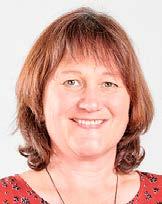
Ange Holt
we can make sure we get these things to you with the correct information so that you can make an informed decision, just so we know what to do, when to do it,” Holt said.
Russo said it would be helpful if the board was consistent in its strategic priorities.
The council will hold a financial strategy workshop on October 16.
By Chris Gardner
NZ Post chief operating officer Brendon Main has agreed to meet with ProDrive chief executive Peter Gallagher to discuss the long-running case of Waipā posties Ian and Danny Kennedy.
The couple were contracted by NZ Post to sort, process, uplift and deliver “all mail and other items for delivery” for the Tamahere RD3 rural post run from April 1, 2019. They
invested $500,000 into the business which ran six vans with five staff. Their contract was cancelled on November 10, 2023, after they asked why other contractors were sorting, processing, uplifting, and delivering mail in the district.
Main agreed to the meeting after Deputy Leader of the House Simeon Brown declined Gallagher’s call for a ministerial inquiry into the case.
The case is heading to court.
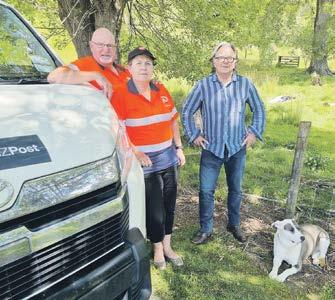











By Mary Anne Gill
It might have been a celebration for the clients but staff and care workers from Waikato-King Country disability organisation
Enrich Plus had a ball too.
The second Client Celebration Ball was held on Friday night in the Cambridge Town Hall and the theme Prince and Princess gave plenty of scope for creativity.
More than 200 clients from Te Awamutu, Cambridge,
Hamilton, Tauranga and Ōtorohanga bopped to the beat of DJ Spin Daniel Cox in costumes which must have tested the stock in various Op Shops around the region.
The big announcement of the night was for King and Queen of the Ball. It was a close thing for the men – Zane Johnson won but had left by the time the announcement was made.
Huge cheers erupted when Maddison Gay won the Queen of the Ball. Her family, including mother
Tracey Gay, had excelled themselves creating a carriage – complete with two horses - built around her wheelchair for their princess. Ian Cotterell was there too – he is an original client from the 1990s when Enrich Plus, then known as Gracelands Community Trust – was founded following the closure of Tokanui.
Team leader Ngawai Hamblin said the night was a huge success and very well received by clients, whānau and Enrich Plus staff.
“Everyone had such a great time and the venue was perfect for the theme,” she said.
Interim chief executive Janne Nottage thanked staff for their contributions saying they not only supported the clients by dressing up but their “creativity and enthusiasm made this event a huge success.”
Awards were given to: King and Queen of the ball: Zane Johnson and Maddison Gay; best dressed: Leanne Cummins,

Best
William

By Mary Anne Gill
The removal of an old collapsed retaining wall at Lake Karāpiro last month revealed tyres full of golden clams.
A landscaping and construction company was to replace the wall with a new sandbag wall during the lake’s annual lowering.
Workers contacted Biosecurity NZ for advice when they found the clams and the government agency





gave permission for the tyres to be moved off site to dry before recycled.
The tyres had to be cleaned on site first with silt removed and the trucks used to transport the tyres lined to prevent water leakage while enroute to the depot.
Community groups with wash stations allocated by Biosecurity New Zealand made them available to wash the tyres before they were loaded onto a truck for removal.
The Lake Karāpiro Check Clean Dry
team have had a busy start supporting the North Island and national masters rowing events.
Leading the team this season is Janette Douglas of Cambridge.
“I look forward to leading the onthe-ground work to support what Biosecurity New Zealand does at the national level, over the coming season.
“For me, it’s just as important that our lake users understand the ‘why’ as the ‘how’ of the Check Clean Dry message.”
The gold clams are prolific breeders
– up to 400 every day. They were found at the Bob’s Landing area of the Waikato River near Lake Karāpiro in early May 2023 and identified as corbicula fluminea.
Since then, clams have been confirmed in the river from Lake Maraetai Landing to Tūākau.
Niwa will be funded $10.2 million over five years to improve understanding of Corbicula fluminea. The aim is to come up with solutions to control the clams.
By Viv Posselt
A service at Te Awamutu’s Anzac Green on Saturdaywill commemorate one of New Zealand’s darkest days in World War One.
The half-hour October 12 service will mark this country’s losses at Passchendaele in Flanders, Belgium, on October 12, 1917.
Te Awamutu RSA’s Lou Brown said the battle has become known as one in which the greatest number New Zealand troops, around 550, were lost in a single day.
“This year is the battle’s 107th commemoration,” Brown said.
“Commemorative services are held in rotation at different centres around New
Zealand. Te Awamutu held it on the 100th anniversary, and we have been asked to hold this one.”
He said Saturday’s service will include a presentation on the battle at Passchendaele.
Te Awamutu cadets and local and national groups with military affiliations, including Patriots Defence Force Motorcycle Club
members, will attend. Many of their number ride into the area each year for commemorative services at the Pukeatua War Memorial Church.
Saturday’s service will be around the recently-restored flagpole at Anzac Green in Teasdale St. It will start at 11.30am.
Nineteen Waikato projects – including Southern Links and Cambridge to Piarere roads – were among the 149 projects released for inclusion in the Government’s one-stopshop Fast Track Approvals Bill. The projects will help rebuild the economy and
fix New Zealand’s housing crisis, improve energy security, and address the country’s infrastructure deficit, Minister for Infrastructure Chris Bishop said on Sunday.
New Zealand Transport Agency Waka Kotahi will deliver Southern Links, an effective network of
state highway and urban arterial routes to support Hamilton’s planned southern growth into Waipa.
It will link SH1 from Kahikatea Drive to the Waikato Expressway at Tamahere, and SH3 from Hamilton Airport to central and east Hamilton.
There are 11km of local arterials and 21kms of state highway along with associated infrastructure, activities and works. NZTA will also develop a 16km long four-lane expressway from Cambridge to the intersection with SH29 at Piarere.
By Viv Posselt
Pirongia School is enjoying a rocking run of success across its arts sphere.
Two of their Jump Jam teams scooped the top prize in their categories in last month’s regional competition, and as a result, the school will now enter a composite team in next month’s nationals.
On top of that, a lead singer in a band in the recent Waikato Band Slam
– Nellie Muckle – was named the top female vocalist of the night. Nellie also performed with one of the Jump Jam teams.
“We’re absolutely thrilled… it’s great news for the school,” principal Kelly Bicknell said. “The arts are truly alive and thriving here.”
The students were steered to their Jump Jam success by one of the school’s teachers
and ‘jump jam coach’, Nicola Spence. While she has led teams through jump jam before at her previous school, it’s new for Pirongia and seems to have taken off like wildfire.
The school put in two teams – the blue-shirted Pirongia Pulse Team, performing ‘Freaks’, and the orange-topped Pirongia Bewitching Team, performing ‘Magik 2.0’.
‘Freaks’ was entered in the Strictly Freshman Year 5-7 category, and ‘Magik 2.0’ in the Year 7-8/Open category.
Each team won their category, so the school was invited to put a combination team into the Open category of the Jump Jam Nationals, to be held in Hamilton on November 9. That combination team has been dubbed Bewitching Pirongia.
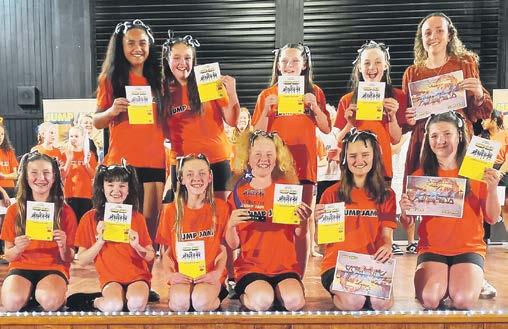



The students’ tickled pink coach, who reckons she can’t dance a step herself, is massively proud of her charges.
“We’re all thrilled,” she said. “The students have shown amazing energy throughout… keen to enter and happy to train every lunchtime for most of this year. The whole jump jam movement is gaining momentum here.
More and more students want to give it a try.”

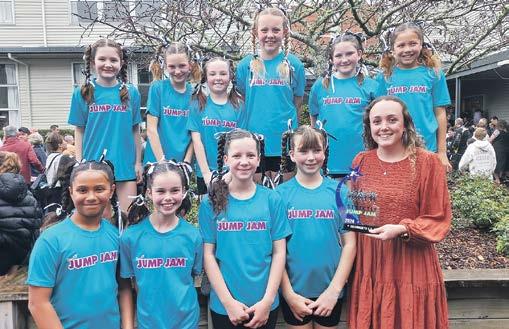












Beds4U reserve the right to amend any misprints or error
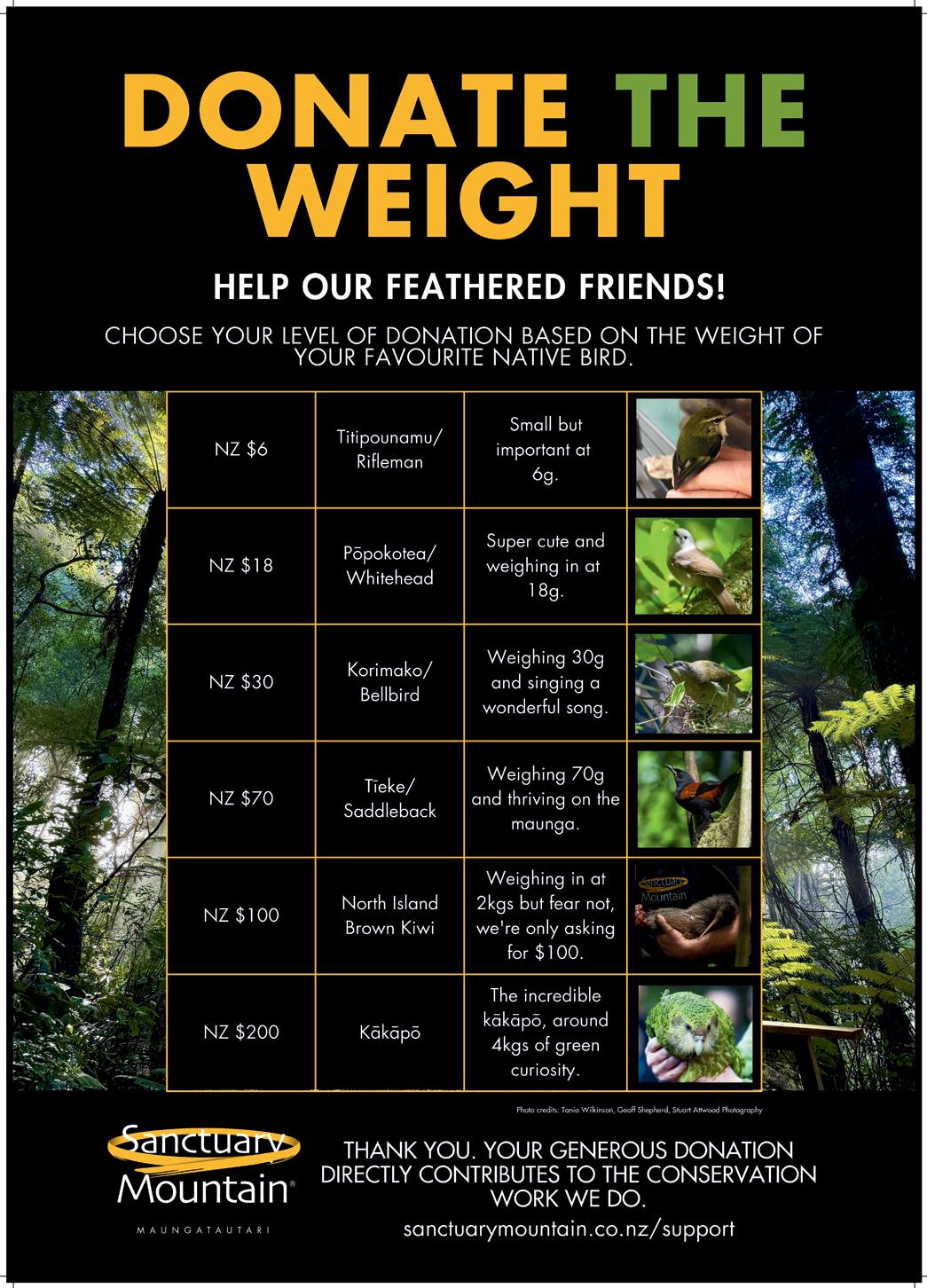
By Chris Gardner
New Zealand First leader Winston Peters will speak at a public meeting in Hamilton at the end of the party’s convention on Sunday.
“It's just a really good opportunity for the party leader to say what we have been achieving,” said Pirongia-based New Zealand First board member Pip Eyre, who also works for the party leaders’ office.
Peters will speak at the Distinction Hotel in his capacity as party leader, rather than his deputy prime minister role which ends in May 2025, when the baton is passed to ACT party leader David Seymour.
Eyre is focused on supporting Peters.
“We think he's pretty awesome and we just want to carry on as we have done. We've got a great working relationship and in Parliament and great team and we're just getting on with it, progressing New
Zealand First policy.
“We're excited to hear what he's got to say and what updates he's going to bring to the public in that capacity,” Eyre said. “We're excited to get everyone together and round out a great first year back in government.”
Eyre was most proud of the progress NZ First had made in getting a second broader phase of the Royal Commission Inquiry into New Zealand’s Covid-19 response into the coalition agreement with the ACT and National parties. Phase two will start next month and be the independent, full scale, and public inquiry.
Second on Eyre’s list is the inclusion in the 2024 Budget of $191 million over four years to fund the recruitment and retention of 500 more sworn police officers and a further $34.6 million in capital to ensure that they are properly equipped to do their jobs.
Eyre was also proud of

the $1.2 billion Regional Infrastructure Fund headed by NZ First member of parliament and regional development minister Shane Jones. Councils, iwi, businesses and community organisations with
gear in October 2022 when Waikato-Tainui and Pinnacle saw how the Te Whare Tapa Whā centric model of care - that encompasses western and traditional Māori practices – was working.
Both committed funds to keep it going – Tainui money for the facilities and patient procedures, Pinnacle for the cost of clinical delivery.
Mahoe came on board in January and the clinic’s free services have been fully subscribed every week since providing GP, diabetes nurse and pharmacist consults, cervical screening and prescriptions.
Roberts hope they will soon be able to add immunisations for tamariki.
Lim says word is spreading across the affiliated network and as the clinic becomes more popular the nurses and GPs have been receiving an increasing number of drop-in patients as well as the patients who have made scheduled appointments.
Pūniu River Care – an iwiconnected environmental restoration organisation –has its nursery next door.
The nursery approached the marae several years ago wanting funds for their first irrigation and has since grown into what it is today, says Roberts.
Another funding boost from Tainui has resulted in wooden planters being installed to grow vegetables for visitors and patients.
Some whānau had stopped going to the GPs in
By Mary Anne Gill
The application for a Cambridge charter school has passed the first stage and the applicants will now be assessed for their operational fitness and capability.
Ray and Maxine Nelson, who have owned and run Ignite Arts Academy in Cambridge for 13 years, worked with education consultant and former principal Alwyn Poole on their application.
receiving teacher applications and are calling for letters of support from the community. In their application, the Nelsons said Ignite Academy had recently been approved as a charitable trust and it was within that they would run the charter school.
The school would be called Ignite Arts Academy and be a year seven to 10 composite school with 90 students next year rising to 120 in 2026.
infrastructure projects that support regional priorities are invited to apply for funding from the Regional Infrastructure Fund.
Jones is hosting a Waikato Regional Summit Meeting in Hamilton tomorrow.
Continued from page 1
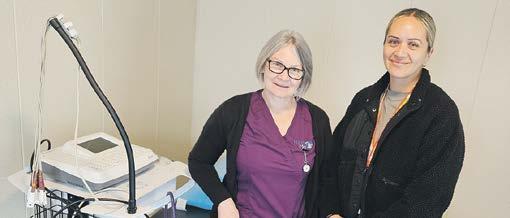
from Te Awamutu Medical.
Te Awamutu because they owed money. The funding helped pay off those debts so they could access specialist help and speed up clinical investigations.
“It fits in with Tainui’s health and wellbeing strategy,” says Roberts.
Te Wano is on a fixed term contract as part of Pinnacle’s Comprehensive and Community team and will be active at the clinic and around the region.
The team provides primary care with a focus on improving equity of access to care and health outcomes for Māori, Pacific people, disabled and people living in rural and highly deprived areas.
Te Wano was previously a public health nurse, and her mother Tania is charge nurse manager at Te Kūiti Hospital.
The community team has also backfilled a clinical pharmacist position allowing Rachel Bell to spend more time supporting the marae
clinic.
Other partnerships include Rongoaa Tuku Iho Healing, Selina Paerata a health improvement practitioner from Kokiri Trust, Diana Johnson - clinical psychologist Te Amohia Health (Quit Smoking), Ko Wai Au (Rangatahi Service), Māori Women’s Welfare League and Kainga Aroha.
The initiative includes medical visits, bowel screening, mental health assistance, dance and movement sessions and health food preparation workshops to ensure whānau have a holistic hauora experience.
The clinic has attracted attention from researchers who have secured a grant from the Health Research Council to look at how the healthcare delivery has made a difference. Another successful partnership is at the marae itself where Roberts, a pākehā, works closely with kaumatua and marae
co-chair Hone Hughes. There is a family connection – Roberts’ wife Moe is Hughes’ cousin.
Roberts met his wife to be in 1972 after moving from Australia and trained as a psychiatric nurse at Tokanui Hospital. He worked for Hauora Waikato Kaupapa Māori Mental Health Service up until his retirement in 2018. Since then, he has devoted time at the marae.
“There’s been a lot of interest in this marae-based programme,” he says.
In the first three months of this year, the clinic saw 77 patients, 14 of them for the first time. In the next quarter the patient numbers topped 120.
Mangatoatoa Marae also hosts a monthly legal clinic in partnership with Community Law Waikato for employment issues, tenancy, judicial matters, power of attorney and wills.
• More photos: teawamutunews.nz
They hope to open one of 15 new charter schools after $153 million was approved in this year’s Budget for charter schools over the next four years. Thirty five state schools will also be converted.
A charter school is a statefunded school that operates on a 10-year contract and can set its own curricula, hours and governance structures.
“We have received a significant amount of feedback from Cambridge families regarding the lack of middle school and early high school options for their children and [who] have voiced their support for a schooling option that would cater for children needing to have a different approach to their education,” said Maxine Nelson.
The couple are also
“Our firm belief is that every person is creative at their core and that adding that to high quality academic development young people have an opportunity for a fulfilling and contributing life,” the application said.
“We desire to nurture and grow confident, self-aware students that will be an asset to any learning/work environment they choose to be a part of.”
The school would have an academic morning and an arts and activities afternoon. Class sizes would be 15:1.
Associate Education minister David Seymour last month said half of the 78 applications received were unlikely to proceed.
The Nelsons need to get their stage two application through by the end of the month.
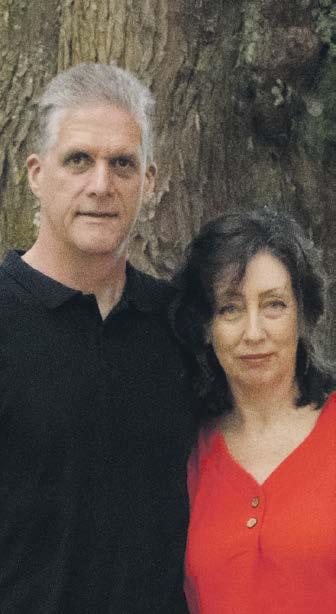
Elevate Ōtorohanga’s first economic development forum will look at “challenging times” and feature keynote speakers including Shamubeel Eaqub, Simon Perry, Honey Hireme-Smiler and Andrew Hoggard.
“We’ve recognised that times are challenging, so we’ve planned a day designed specifically for community leaders and
managers to ‘take action’.
Elevate chair Marain Hurley said.
“Elevate brings together a quality lineup of keynote speakers to deliver a day of lively presentations that promise to inspire and provide insight into new ways of thinking,”
“Together they can be expected to enlighten us on opportunities to grow our economy, provide insight
on how to create successful partnerships, and share experiences that will support us with our own wellbeing and ways to support others.”
Shamubeel Eaqub is former Principal Economist at the New Zealand Institute of Economic Research, where he focussed on analytical frameworks to aid economic forecasting, commentary and incisive research into topical areas of economics.
Police investigating a burglary at a supermarket are asking Cambridge News readers to help identify these five people caught on CCTV camera
About 3.40am on September 30 the five arrived at the Fresh Choice supermarket on Cambridge Road in a Mazda Demio which had been stolen earlier from nearby Victoria St.
They smashed a window to get into the store, and in doing so activated a fog cannon. They then fled in the same car, found in Abergeldie Way later that morning.
Police believe the five are from the Cambridge area and are appealing to the community to report any information which could help identify them.
By Julie Guest, Vicar, Parish of St John Te Awamutu
This week we end the Season of Creation that Christians across cultures and countries celebrated together. Every year, the season ends on the Sunday following St Francis Day. St Francis’ life and ministry was centred on his understanding of the interconnectedness of all life. He is often portrayed as having a special relationship with animals, even seeming to be able to talk with them. He also sought to live so as to help people see the benefit of looking for the best in everyone. He worked to create an environment where every living creature could thrive, he helped people and creatures understand each other’s needs.
In the famous story of St Francis and the wolf, St Francis was called in by the people of Grubbio village to deal to the wolf who was eating their sheep. St Francis met with the wolf, discovering that he was old and injured, so he couldn’t run fast enough to catch his usual prey to feed himself. He was reduced to stealing the sheep from the villagers. St Francis made a deal between both parties. If the villagers would feed the wolf, the wolf would leave the villagers’ sheep alone. As they kept their promises, each side discovered other benefits from their relationship.
The wolf, who had been rejected by his pack, found companionship, while the wolf’s presence protected the village from other marauding animals.
On the outskirts of Te Awamutu we have Maungatautari, or Sanctuary Mountain. As we read in our papers, the wonderful achievements of Maungatautari are under serious threat as funding is removed.
One was wearing a twotone jacket with a small grey crossbody bag. Another was wearing a grey baseball hat, red hoodie under a black jacket and sunglasses. Another wore a black Nike vest over a black and grey Adidas hooded sweatshirt and black New Balance trackpants.
If you can help, contact Cambridge Police.

As the name implies, this place has created a sanctuary for all native wildlife. The website says “Surrounded by one of the world’s longest pest-proof fences, we are New Zealand's largest fenced ecosanctuary. Our ancient forest is home to many of New Zealand's unique and endangered wildlife.”
Today we cannot quite emulate St Francis, under whose care rats, mice, stoats, possums and all non-indigenous species would somehow be persuaded to pose no threat, but to feast only on seeds. However, we can, through the dedicated work of a few, follow his principles, as we create an area where our native life, whether leafed or feathered, two legged or six, can be protected and allowed to replenish.
Christians are tasked by our Creator with care and stewardship of all creation. Here is an opportunity to show that we take the task seriously. We all benefit from having Maungatautari so nearby.
Heard of “forest bathing?” It’s current-speak for spending time in the bush; breathing in the scent of damp forest floor, listening to the bird call, appreciating the movement of branches, shimmering leaves and birds in flight. Our entire well-being is enhanced by the experience. With the conflict and ugliness in the world at present, how fortunate we are to have a source of wellbeing so nearby.
But it won’t continue without our help. Sanctuary mountain is asking for donations to allow their work to continue. In the spirit of St Francis, can you find a way to contribute to the wellbeing of all creatures together?
Perry chairs the Perry Group and Brian Perry Charitable Trust, based in Hamilton and is involved in community projects including Te Awa Cycleway Trust and and Bridge Housing which is delivering affordable homes.
Honey Hireme-Smiler is a former Kiwi Ferns and Black Ferns representative who was appointed a Member of the NZ Order of Merit for
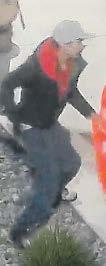
her services to sport.
ACT MP Andrew Hoggard is the Minister for Biosecurity, Minister for Food Safety, and Associate Minister of Agriculture and Associate Minister of the Environment.
He is a past president of Federated Farmers.
Elevate was previously known as the Ōtorohanga District Development Board.




Meghan Hawkes looks back on the news as reported in 1935.
Two Kihikihi women who wandered off and disappeared two years apart initially had their community baffled.
When Arthur White returned home from work one August evening in 1895 and found his wife Jane missing, he lost no time in searching for her through the township, along the roads and all round the neighbourhood.
He continued his search nearly the whole night. The next morning, he was still looking for her when he was told by a young lad named Harris that Jane had been found by boy named Sibley. She was deceased in a drain on the lower KihikihiTe Awamutu Road. Jane was taken by Constable Carroll to the White’s home to await a coroner's inquest.
The Whites had moved to Kihikihi from Te Awamutu two years previously and Jane, 56, had been in declining health. She started to wander away from home and had a weak memory.
At the inquest, held at the Star Hotel, J Fratis said he had seen and spoken to Jane when he was rambling about the roads the evening, she went missing. This was the last time she was seen alive. Constable Carroll testified to the somewhat eccentric and roaming habits of Jane all of which went to show that she had accidentally fallen into the drain, which contained some two feet of water and weedy growth. After a short deliberation, the jury returned a verdict of ‘found drowned.’
Newspapers erroneously called her old, about 70 years of age, which wasn’t
the only reporting mistake, the Waikato Times having to issue an apology - “Owing to a telegraphic blunder, we represented that the late Mrs Jane White had committed suicide. This has caused pain to her relatives. We can only rectify matters by calling attention to the evidence given at the coroner's inquest, which clearly demonstrates that her death was accidental and due mainly to physical incapacity to rescue herself from a dangerous position into which she had accidentally fallen.”
The sudden disappearance on a March evening in 1897 of Bertha Jennings again caused much alarm and anxiety at Kihikihi. She was last seen by her two sons Walter, 13, and Albert, 11, at 9pm. Before they went to bed Bertha had been reading to them, her husband George having retired about eight o'clock.
He woke up at one the next morning, and finding Bertha not in bed got up and discovered a lighted candle in the scullery but no Bertha. He woke his boys and searched for his wife, but without success.
Constable Carroll was alerted and he and some of Bertha’s friends and relations started searching at daylight but there was no trace of her.
“The affair is a complete mystery as yet. The hope that she may yet be found safe and uninjured is a universal expression here,” said the Waikato Argus.
Bertha was found about noon that day in the Mangaohoi Creek, some two hundred yards below the bridge on the


Kihikihi – Rangiaowhia Road. There was nothing to show how she got into the water. The melancholy outcome caused a great shock to very many people at Kihikihi. No one could believe it. Bertha, who had married George Jennings in 1883 when she was 22 and he 69, had a lively manner and cheerful disposition.
Another newspaper jumped the gun and called it a “sad suicide” noting that Bertha was ordinarily of a happy demeanour. At the inquest, held in the Jennings home, Alberta Wilson, sister of Bertha, said that Bertha had been suffering from headaches lately, but to no one had she expressed any intention to make away with herself.
Dr Brewis, of Hamilton, certified that death had been caused by drowning. An open verdict was returned. Due to uncertainty over when the inquest would be held, Bertha’s relatives were unable to fix a time for the funeral until late in the day. Consequently, the funeral was hastily arranged, with little notice given and many weren’t able to attend.
Jane and Bertha, who both suddenly up and vanished, are buried at Kihikihi cemetery.

As Mayor of Waipā, I’m very pleased to share the Draft Ahu Ake - Waipā Community Spatial Plan with you and ask for your final input and feedback. This plan represents the collective vision of mana whenua, iwi, key stakeholders, and the wider community for Waipā -a blueprint that reflects our aspirations and sets a clear path for our district’s future.
Ahu Ake is more than just a plan; it is a commitment to our people, our environment, and our heritage. It represents our shared values and our vision to build a future that is inclusive, sustainable, and vibrant.
This plan will guide us as we navigate the challenges and opportunities that lie ahead, ensuring that the Waipā District remains a place where we are proud to live, work, and play.
Our journey to this point has included extensive consultation and collaboration. The voices of our community have been instrumental in shaping Ahu Ake, and I am grateful to everyone who contributed their time, insights, and passion.
Your input has been invaluable in creating a plan that truly represents the heart and soul of Waipā. As we move forward, it is important that we continue to work together, creating strong partnerships and maintaining open lines of communication.
We’re in the final stages of finalising the Draft Ahu AkeWaipā Community Spatial Plan, which will determine what our district, towns, and villages will look like in 2050.
This plan will cover how we’ll manage future growth while protecting the district’s unique environmental and cultural heritage for future generations.
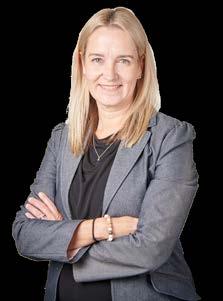
We want your feedback on five key packages of activity.
The Ahu Ake plan includes five key packages designed to address the diverse needs of our community:
1.Future Development and Housing Package: By 2055, Waipā is expected to welcome 22,000 new residents who will require adequate housing, employment opportunities, educational facilities, and recreational spaces.
2. Placemaking Package: A comprehensive approach to placemaking, investing in community infrastructure and activation that attract high-quality businesses and employees.
3.Strategic Framework Package: This will help the council to reduce risks and allocate resources efficiently in the long run.
4.Community Places Package: Facilities and spaces will evolve to encompass a broader range of functions that are increasingly relevant to the communities they serve.
5.Karāpiro Programme Package: By enhancing Karāpiro’s accessibility to surrounding areas, council would facilitate improved movement for residents, visitors, and businesses.
Join us at our upcoming drop-in sessions to learn more about Ahu Ake and share your feedback.
• Saturday, October 12:
Te Awamutu Library Community Space (9am–11am) Pirongia War Memorial Hall (1pm–2.30pm)
• Tuesday, October 15:
Te Pahu Hall (5pm–6.30pm)
• Wednesday, October 16: Webinar (12.30pm–1pm) Te Miro Hall (6pm–7pm)
• Saturday, October 19: Cambridge Farmers Market (8am–12noon) Karāpiro Hall (1pm–2.30pm)
• Monday, October 21: Ngāhinapōuri School (6pm–7pm)
• Tuesday, October 22: Rukuhia Hall (6pm–7pm)
• Tuesday, October 29: Ōhaupō Sports Hub (6pm–7pm)
• Wednesday, October 30: Kihikihi Hall (5pm–6.30pm)
• Online: waipadc.govt.nz/ ahu-ake-have-your-say and complete a submission form.
• In person: attend one of our drop in sessions and complete a submission form waipadc.govt.nz/ahu-ake-have-your-say
• Drop in: pick up and complete a submission form from your local library or council o ce
• Social media: find out more and engage with us on Facebook and LinkedIn Your voice matters.






Situated in a quiet cul-de-sac with open views from the elevated position, mountains feature on the landscape. The modern villa with rolled veranda starts the classic feel, the wide entry and flow through to the open plan of the main living encompassing the defined areas for family, formal or dining.
A welcoming kitchen forms the heart of the home, the dining connects to a portico with sunshade and winter blind for all year round use, high ceilings, wide doorways, ceiling heat pump, attention to details show throughout this home. You will want to come home to the Hamptons feel. Contact Vayle to arrange a viewing.
BY



Sigrid Christiansen
Farming families are being called on to help connect Filipina women with an online new English language programme.
Founder Lyzanne said she owes her life to speaking English well and easily making friends in New Zealand. It saved her after she nearly went off a cliff: a real one, not a metaphor.
The course is coming north after a successful South Island pilot.
Topics include Kiwi slang, dairy farming vocabulary, migration rules, schools, and programmes like the ACC and Kiwisaver. It covers ways to access mental, emotional and physical wellness support.
“It helps facilitate trust and bridge the initial huge language barrier,” Du Plessis said.
She said isolation was the challenge: students often do not drive, so can’t leave their farms easily to attend English classes. Cultural norms make it hard to speak up and the language barrier makes it hard to find New Zealand friends, or understand the teachers at children’s schools.
Du Plessis, who is from South Africa and lives in
Christchurch, knows that a new country takes getting used-to.
When she first arrived, she broke her foot but didn’t go to the doctor “because I didn’t know about the ACC”. Later, it needed surgery.
She thanks the online language learning business
Te Puna Reo Māori, owned by Anita Gill, for offering its platform free, and connecting her with Philippines-based English teachers through existing staff.
The pilot launched two weeks later. Despite the timing, during calving, it got an “overwhelming” response.
“The improvement in the students’ confidence was incredible. Afterwards, they felt comfortable to approach a Kiwi and say something.”
Through recent funding from Rural Women Southland Interprovincial, the next course starts next month.
So what about that cliff? While dairy farming at Te Miro near Cambridge, Du Plessis’ second child was born - and “didn’t sleep at all”.
She fell asleep driving and woke as her car was approaching a cliff.
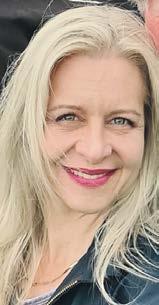
“But my Kiwi friends told me about Plunket and a sleep clinic.”
Without those conversations, she might not be here.
“21 years ago, I was a rural migrant wife that had to go through all the adjustments to settle in a new country, new climate, new culture, and isolated form my normal support networks back in my home country. It was my ability to speak English that helped me integrate into the rural community, make Kiwi friends, and find the support I needed, in those early years in New Zealand.”

Type of rice (7)












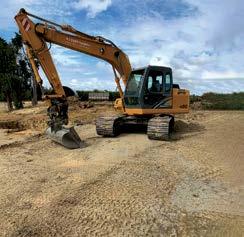












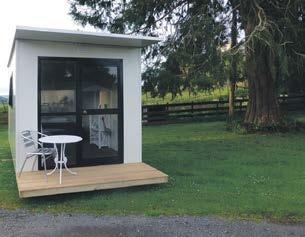








in tooth (6)
62 Unwell (3)




66 On land (6)
67 Church official (6)
69 Expenditure (9)
72 Vigour (6)
73 Petrol-engine part (5,4)
75 Betrothed (7)
77 Friend (3)
80 Very fluid (5)
81 Go out in bad weather (5,3,8)
82 Borders (5)
83 Knob (6)
84 Lover’s song (8)
85 Belt (5) DOWN
2 Or else (9)
3 Curved (5)
5 Tidings (4)
6 Story segment (7)
7 Not easily irritated (4-8)
8 Flowering bulb (5)
9 Bewitching, spellbinding (7)
10 Pleasant (4) 11 Cadaver (6)
12 Mournful song (5)
13 Applauded (7)
14 Make a signal (7)
63 Group appointed to represent others (10)
16 Kind, generous, forgiving nature (5,2,4)
22 Rough (6)
23 Ardour (7)
24 Preserved in vinegar (7)
25 Eerie (6)
27 Developed over time (7)











28 Come forth (6)
30 Silence (4)
32 Wander off (5)
34 Welded together (5)
36 Second Greek letter (4)
38 Age (3)
42 Nab (5)
43 Feed (7)
44 Prickling (4)
45 Deadly (6)
46 Hold up (5)
48 Upkeep (11)
49 Invalidates (7)
50 Pixie (3)
51 Fan (7)
52 Allocate (6)
53 Don’t show up (4,2,6)
54 Cast off (4)
57 Walk quietly (6)
64 Musical group (9)
65 Amount overdue (7)
66 Modified (7)
68 Competent (7)
70 Strengthen (7)
71 Meeting schedule (6)
72 Poem (5)
74 Thoroughfares (5)
76 Wide-awake (5)
78 Coloured (4)
79 Bawdy (4)


68 Capable, 70 Toughen, 71 Agenda, 72 Elegy, 74 Roads, 76 Alert, 78 Dyed, 79 Lewd.
52 Assign, 53 Fail to appear, 54 Shed, 57 Tiptoe, 64 Orchestra, 65 Arrears, 66
DOWN: 2 Otherwise, 3 Bowed, 5 News, 6 Episode, 7 Even-tempered, 8 Tulip, 9 Magical, 10 Nice, 11 Corpse, 12 Dirge, 13 Clapped, 14 Gesture, 16 Heart of gold, 22 Coarse, 23 Passion, 24 Pickled, 25 Creepy, 27 Evolved, 28 Emerge, 30 Hush, 32 Stray, 34 Fused, 36 Beta, 38 Era, 42 Catch, 43 Nourish, 44 Itch, 45 Lethal, 46 Delay, 48 Maintenance, 49 Negates, 50 Elf,
We are looking for a carer for our elderly mother in Cambridge, to keep her company during the day over the weekends and on a couple of week days. The successful applicant will generally be required to be with her 9.30 am to 5:30 pm. Mum has an agency carer from 7:00-8:00am each morning to help with showering and breakfast and again from 6:00-7:00pm to help with dinner and her evening routine.
•Initiate and participate in Mum’s daily leisure activities including short walks outside using her walker.
•Responding promptly and positively to any requests for assistance and following good procedures in the event of any emergency.
•Maintain records daily; documenting activities and any incidents; reporting any changes in Mum’s physical condition and/or behaviour, and promptly reporting all changes to the Family.
• Maintaining a clean, safe home environment for Mum.
• General working hours 9.30 am to 5.30 pm Saturday and Sunday and a couple of week days.
• Son and daughter-in-law live a house next door.
• Scope for flexibility.
• $25 per hour.
• Start as soon as reasonably possible.
• Trust worthy.
• A good companion and listener.
• Able to foster a happy and safe environment.
• Physical ability to support our mother. This may involve the need to maintain balance to lift and support her to avoid potential injury.
Experience
• Must have current driver’s license and have own motor vehicle.
• Minimum 2+ year(s) professional or personal experience supporting elderly or individuals with disabilities in New Zealand or comparable experience.
• Must have references and referees particularly relating to demonstrated honesty and trust worthiness.
•applications, resume, and other supporting documents, including references and contact details of referees, may be emailed to homeofboswell@gmail.com
for delivery of the Te Awamutu News, your local weekly community newspaper.
Deliveries are to occur every Thursday. Are you honest and reliable and would like to earn some money while keeping fit? Our runs are suitable for either youth (minimum age 11 years) or adults.
Delivery runs available in the following area:
• Taylors Ave, Greenhill Drive, Racecourse Road
Please contact us on E: admin@goodlocal.nz
Provide your name, phone number, and the area you are located.

Contact listing agent prior-visiting

The Waipa Community Facilities Trust is holding its Annual General Meeting at 6.00pm on the 15th October 2024 in the ASB Community Room at the Perry Aquatic Centre.
Business of meeting:
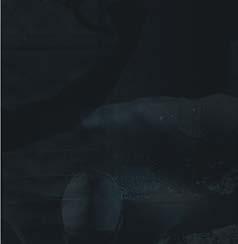
The annual general meeting shall carry out the following business:
(a) Receive the minutes from the previous annual general meeting; and
(b) Receive the Trust’s statement of accounts for the year ending 30/06/2024; and
(c) Receive report from the Chairman of the board and from the CEO; and
(d) Announce retirement of current Trustees and the appointment of new Trustees; and
(e) Appoint an auditor; and
(f) Consider and decide any other matter which may properly be brought before the meeting.
Ruby McPhail - Secretary





Waipā District Council intends to notify the Department of Conservation under section 24(1)(b) of the Reserves Act 1977 that it considers that the following reserve should have its reserve status revoked to enable its disposal, as it is not required for its stated purpose:
Taotaoroa Road Reserve held in Record of Title 504093 with an area of approximately 1.5743 ha and is located on the southern side of Taotaoroa Road.
Any person a ected by this proposal has the right to provide written notice of any objection to the proposal, including the grounds for that objection, any time before 25 October 2024 to Waipā District Council.
Written objections should be addressed to: Reserve Revocation, Waipa District Council, 101 Banks Street, Te Awamutu. Attention: Property Projects Specialist - info@waipadc.govt.nz

















































